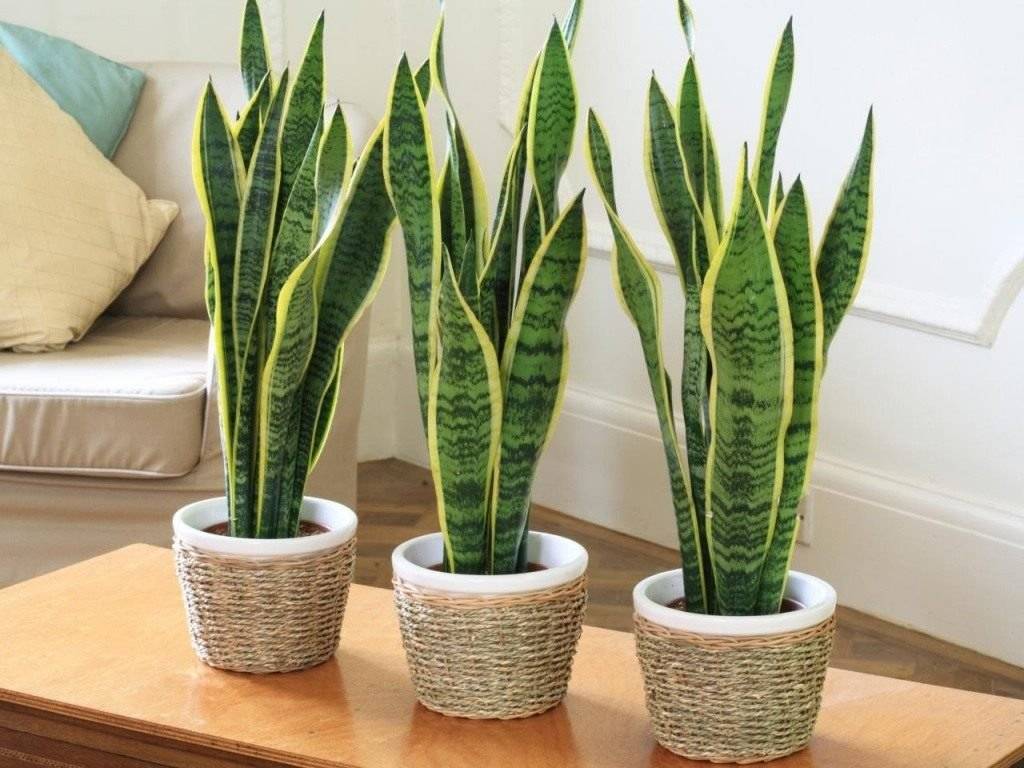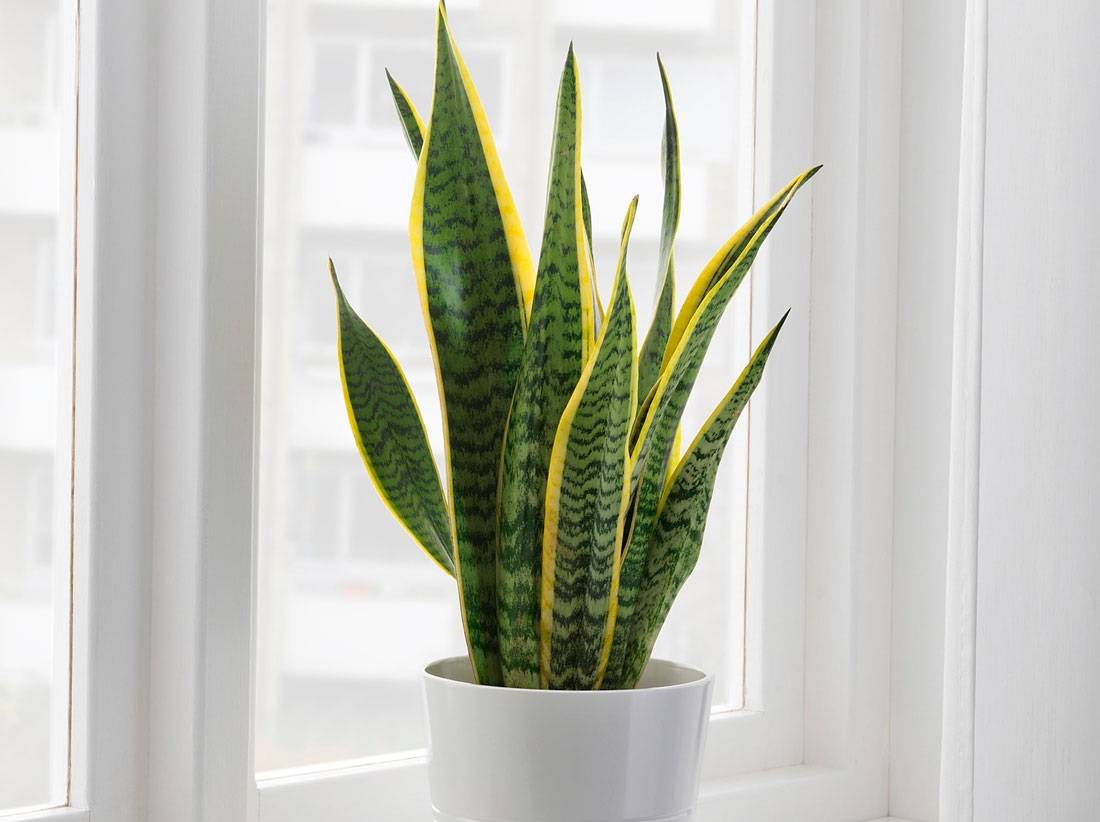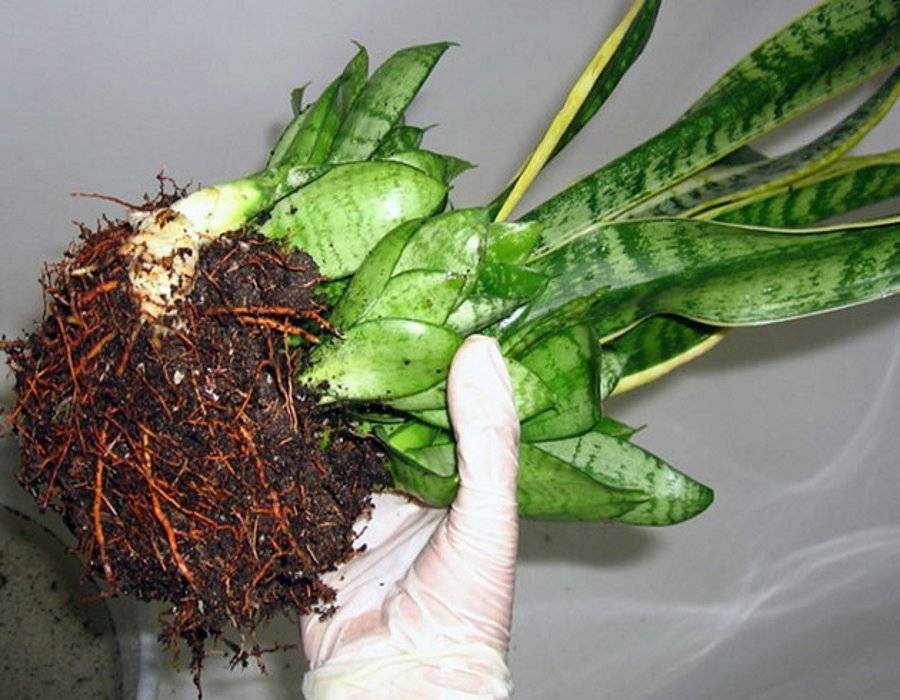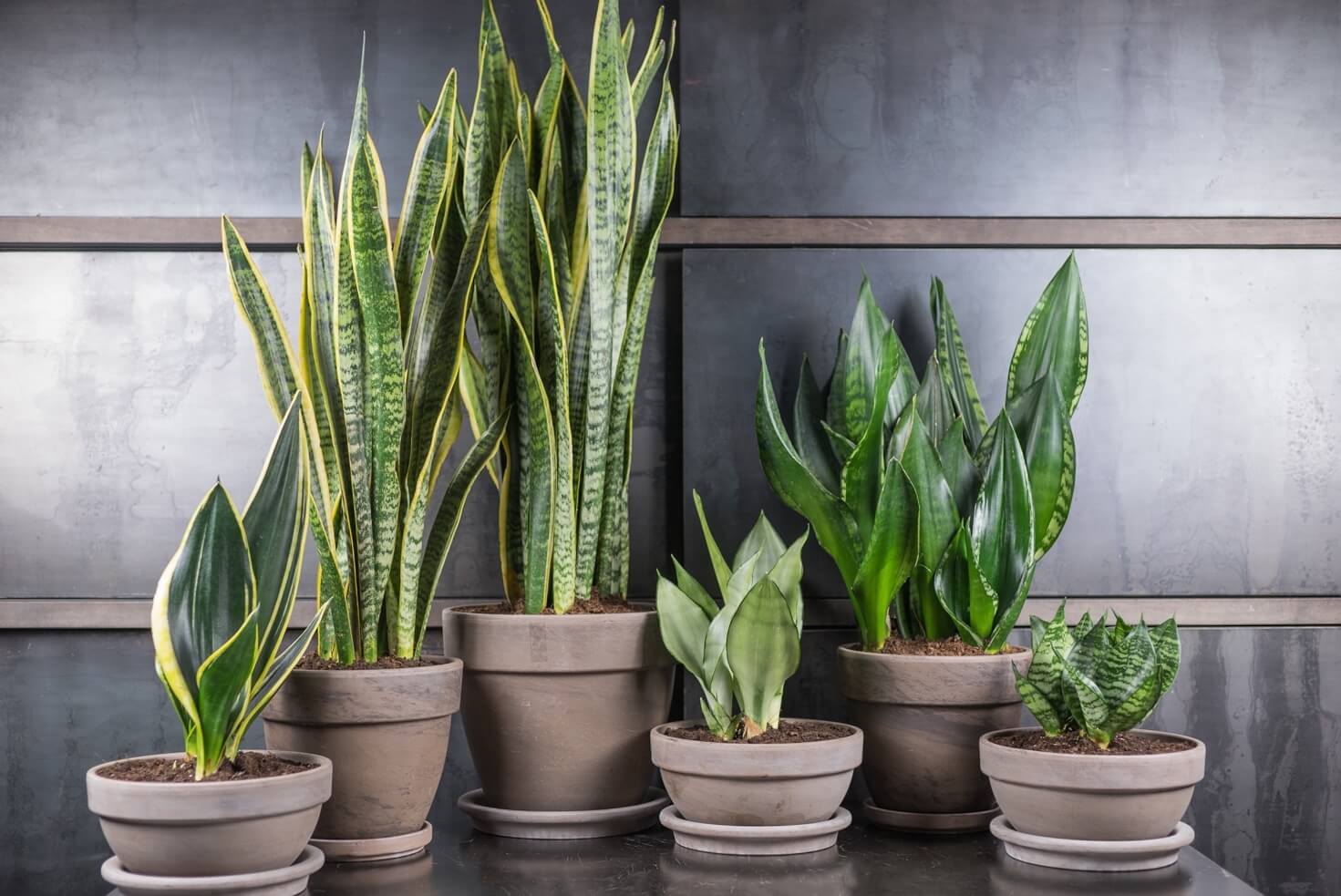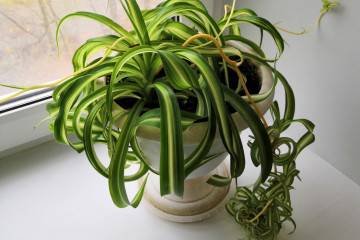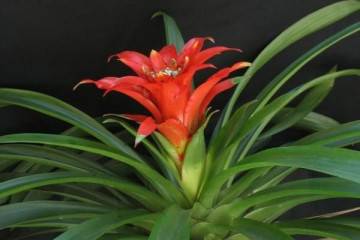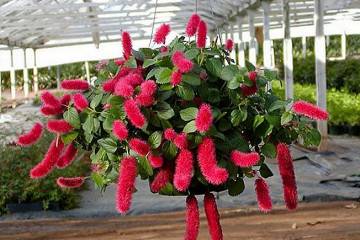Mother-in-law tongue flower - home care
Content:
Mother-in-law's tongue is a popular, beloved houseplant that has been grown at home since the 13th century. Its long ornamental leaves are of particular value. Depending on their variety, leaf plates can have different shapes and colors.
Mother-in-law's tongue - flower: home care
Mother-in-law's tongue has acquired a large number of unusual nicknames over a long period of cultivation: pike tail, snake skin, devilish tongue, Indian sword. Which of the names to choose, everyone decides for himself, but the correct botanical name of the plant is sansevieria. It is very easy to take care of the flower, it adapts to any conditions without problems and is highly resistant to disease.
Mother-in-law's tongue is a succulent that belongs to the Asparagus family. The leaf plates of the bush grow from the very root and reach a height of up to 50 cm. They have a variegated uneven color, including dark green, light green, yellow, cream shades. The shape of the leaves is like a sword or a long tongue.
Despite the many nicknames, the mother-in-law's tongue has taken root among the people, possibly due to the shape of the leaf plates, similar to a long sharp tongue. However, the correct scientific name for the plant is sansevieria.
How mother-in-law's tongue blooms at home
The plant has a habit of blooming at night. At the beginning of its flowering, as a rule, in April or May, the plant releases a long arrow. Soon, small white-green flowers appear on it. The buds are lily-shaped and have a pleasant smell of gum. The plant blooms for only a week.
Features of flower care
Caring for the mother-in-law's flower at home does not require constant attention. He can live a long time without fertilizing and watering, as well as withstand temperature extremes and changing lighting.
Temperature
Mother-in-law's tongue is not picky about temperature readings. Resistant to cold snaps up to 6 ° C. The optimum temperature for healthy growth should be between 15 ° C and 26 ° C.
Lighting
Sansevieria is not particularly demanding on lighting. However, it is still necessary to place the flower pot in moderately lit places. In summer, in bright sun, it is necessary to remove the flower in the shade, and in winter, on the contrary, to put it on the southern window sills of the apartment closer to the glass.
Watering
Like other succulents, sansevieria does not require frequent watering. The flower is watered only as needed, when the topsoil dries out to a depth of 2 cm. Irrigation water is defended if it is hard from the tap. In summer, during dry periods, the frequency of watering increases.
Spraying
Spraying is carried out to increase the humidity of the room, especially during winter heating and summer hot dry weather. The aboveground part of the bush is sprayed with clean water at room temperature. This procedure not only nourishes the leaves of the bush with moisture, but also refreshes it and cleans it of accumulated dust.
Humidity
For the lush growth of foliage, increased humidity in the room is needed, which is achieved by spraying. You can leave the container with water next to the pot, and in winter, constantly moisten a rag and lay it out on the heating radiator.
Priming
It is necessary for planting and transplanting to choose a special earthen mixture for succulents or mix it yourself. To do this, take sod or compost soil in a 2: 1 ratio to peat or river sand.
Top dressing
The big advantage of sansevieria is that with a properly selected nutrient substrate for planting, the flower can easily grow without fertilization. But for a more luxuriant and healthy look, it is necessary to feed the plant at least once a month with mineral fertilizers and 2 times a year with organic matter.
How to transplant a mother-in-law flower tongue at home
It is recommended to plant a bush in the spring. To plant a flower in a pot, a special nutrient substrate is made or bought from compost soil and sand. At the bottom of the pot, you can put a drainage from expanded clay crumbs. First, a quarter or a third of the container is filled, then a bush is placed and covered with earth.
Mother-in-law's tongue is recommended to be transplanted when the bush thickens due to the appearance of new shoots and the tightness of the pot. If the bush has been thickened, the shoots are separated and the flower is propagated, planting each part in a separate container.
Signs and superstitions
Sansevieria adapts well to room conditions and has a decorative appearance. That is why it is common to grow this flower at home. However, many flower lovers are afraid to put pots of mother-in-law's tongue in their home due to the unkind superstitions associated with it. For example, there is an opinion that the plant is muzhegon, provokes scandals and quarrels in the family.
Is it possible to keep a mother-in-law flower at home
In addition to negative superstitions, there are many good and positive signs. Many believe that mother-in-law's language can bring peace and balance to the family. From the point of view of the science of botany, sansevieria can and should be kept in the house, since the flower absorbs harmful substances and compounds from the air that are emitted by furniture, building materials, plastic, rubber. From the sap of the flower, you can prepare external remedies against inflammation, burns and wounds. Tinctures are cooked from leaf plates, which are used internally to enhance immunity.
How to attract well-being with a flower
In order not to miss the happiness and well-being from the family, it is necessary to properly care for and prevent the appearance of diseases on the plant.
To attract well-being and other positive emotions, you need to:
- iron sheet plates to feel good faster in case of ailments and illnesses;
- give a bush in a pot before flowering to show sympathy and receive love from a person;
- to put a pot of sansevieria in a room where visitors and guests are received in order to bring benevolence and kindness;
- put a plant in front of the front door in order to protect household members from damage, and the evil thoughts of envious people and enemies could not cross the threshold of their home;
- put a flower in the bedroom of a husband and wife to stop quarrels and omissions and attract love and understanding.
Mother-in-law's tongue is a flower, home care for which does not require special skills and knowledge. It is not capricious to the surrounding conditions, but it pleases with its pleasant decorative appearance. The bush has useful healing properties and is able to attract only well-being and harmony to the house.
